Before the modern night vision optics technology, the best way to get a good image through a scope or binoculars in low light conditions was to use optics with large objective lenses to gather as much light as possible and produce a useful image. This is still an excellent option for low light conditions at dusk and dawn to make the most of all the available light, scopes with large objective lenses (at least 50mm), to gather more light than more common 40mm objective lenses, and makes them very effective for dusk and dawn shooting to avoid the expense and add weight of ‘active’ night vision equipment.
Article content
- Image Intensification
- Active and Passive Infrared
- Thermal Imagin
- Do you need a rifle mounted system?
- Do you have a dedicated night shooting rifle?
Image Intensification
Image intensifying optics can make use of the very lowest light levels, such as starlight and moonlight, to produce a usable image at night. They are often called image intensifiers as the image they produce is brighter than the light they take in. Nowadays these are often used for low light camera observation and monitored on TV screens, but image intensifying rifle scopes have been popular in the past. However, they are incredibly large and heavy, and the optics that use infrared are much more popular nowadays.
Active and Passive Infrared
As early as The Second World War, ‘active’ night vision equipment was experimented with and began to be used for military applications. During the battles on the eastern front in 1945, Soviet soldiers reported being attacked at night by German snipers with ‘massive telescopic sights’.
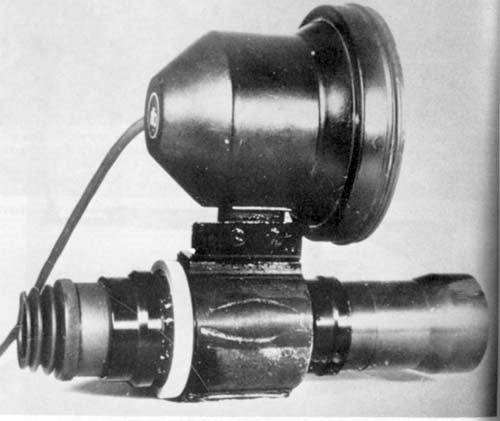
The German Zielgerät 1229 “Vampir” was the first night-vision sniper scope to enter service. Photo By British Army photographer [Public domain]. Image Source: Wikipedia
Since the Second World War technology has been further refined and issued by armed forces and used in tactical applications and has proven useful to hunters, wildlife managers, emergency services, law enforcement agencies, and private security firms, as well as the military. The very first issue equipment was very heavy though.
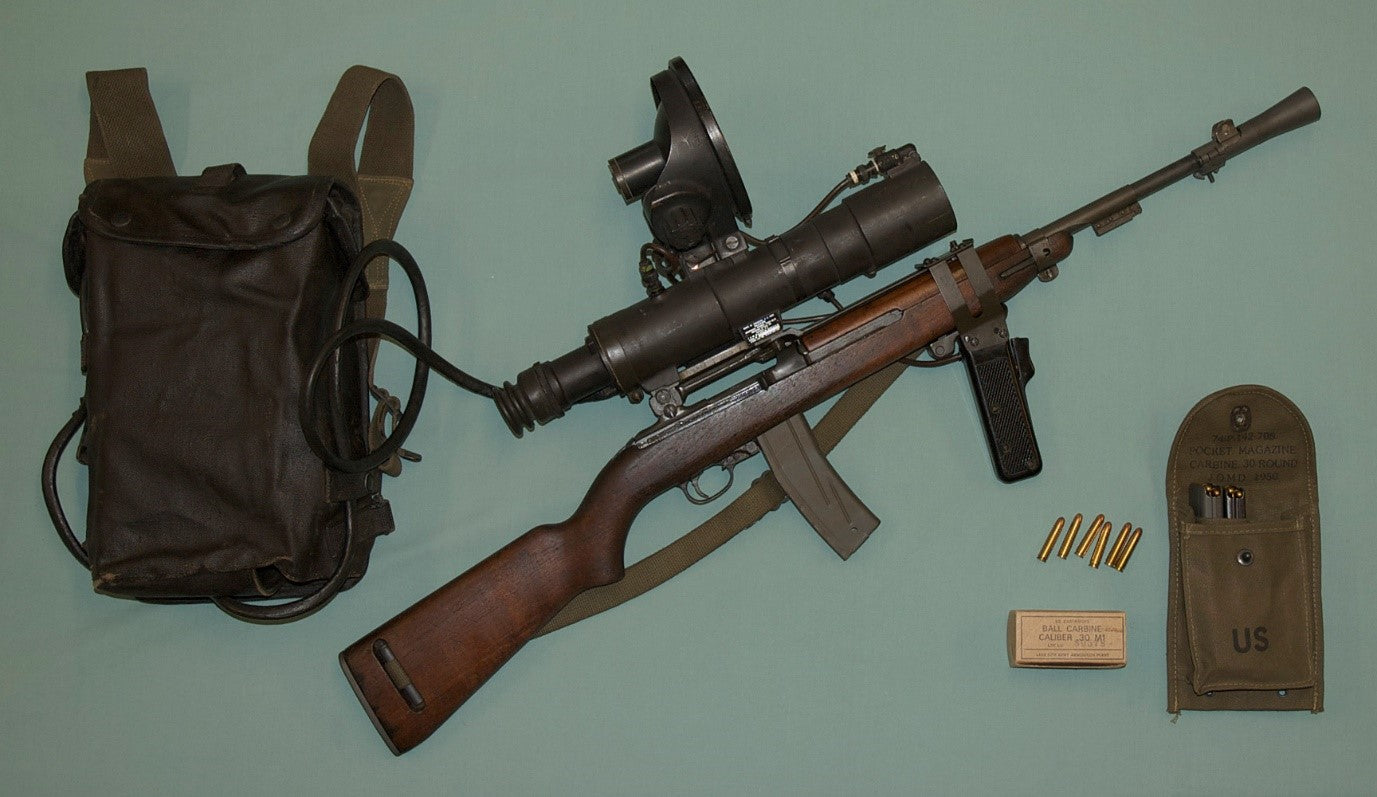
M3 Sniper Scope Fitted to an M1 Carbine Image by Curiosandrelics. This file is licensed under the Creative Commons Attribution-Share Alike 3.0 Unported license. Image source: Wikipedia
The M3 sniper Scope was one of these early attempts at tactical night vision equipment. It is shown here as it was issued during the Korean War, mounted on an M1 carbine with the battery pack that was required to power the infrared illuminator, which was used to illuminate targets with infrared light below the frequency of visible light that humans can see but that can be picked up by the scope.
There are also ‘passive’ night vision optics, which pick up even very low levels of visible light, such as infrared light, and convert it into an image. These units still require a power supply but are generally smaller and more compact than units with built-in IR illuminators. Passive units can still be used in conjunction with standalone IR illuminators. From a tactical perspective though, it is worth remembering that with the wide availability of night vision optics kit now, any night vision equipment can see the IR light you are using if you are using an illuminator. So bear that in mind if you can’t afford to give away your position.
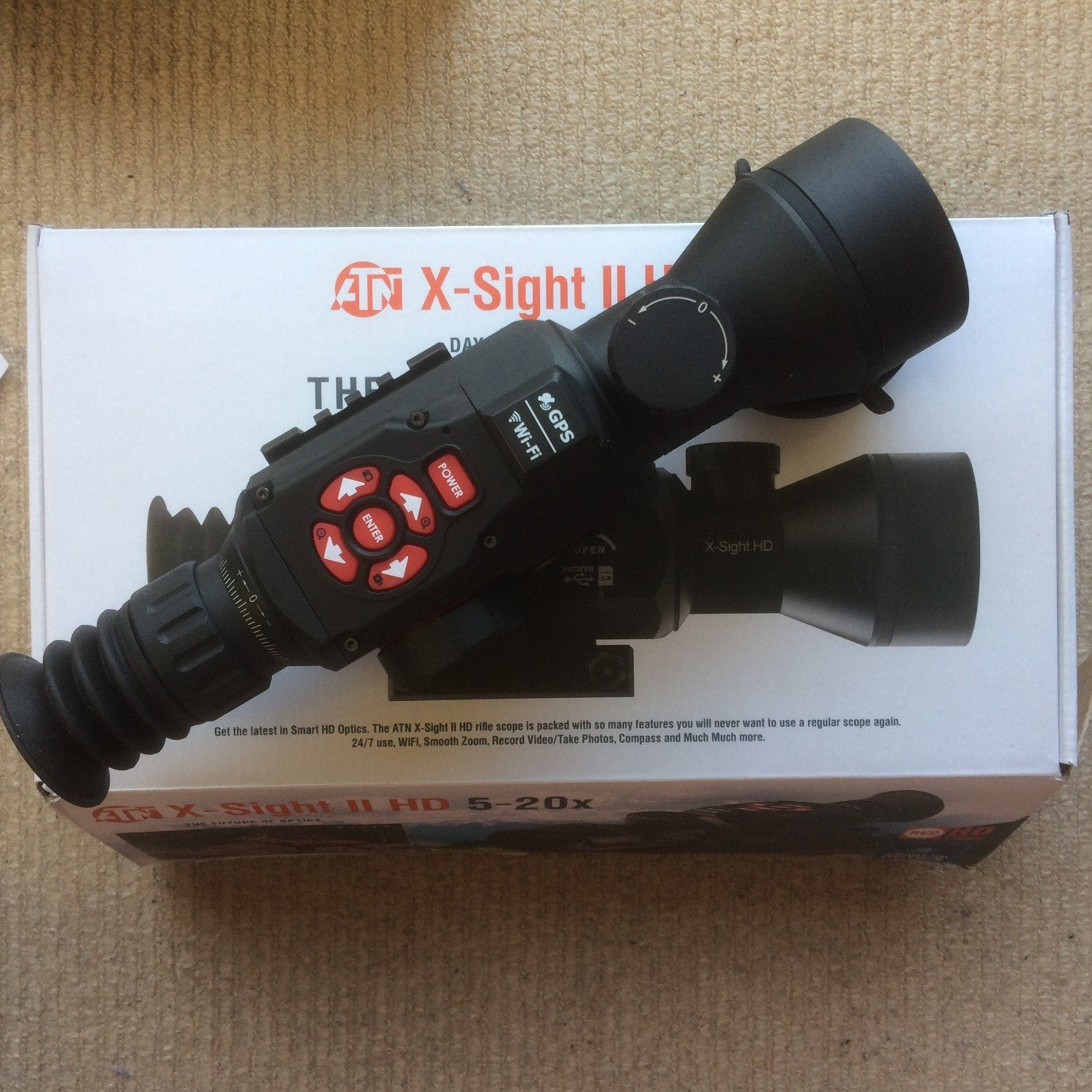
The ATN X-Sight II HD is a day/night scope which can be used as a stand-alone rifle scope or in conjunction with an infrared illuminator
Thermal Imaging
Another ‘active’ night vision optics option is thermal imaging, which allows you to see the difference in temperature between objects. Everything emits a certain amount of infrared energy, which a thermal imager picks up, showing the difference between various temperatures. This is very useful for spotting ‘warm’ targets. They are not quite as effective as media and video games would have you believe, as you can’t see internal organs or look through walls with them. Some night vision systems combine infrared imaging and thermal, while others will allow you to switch between several options.
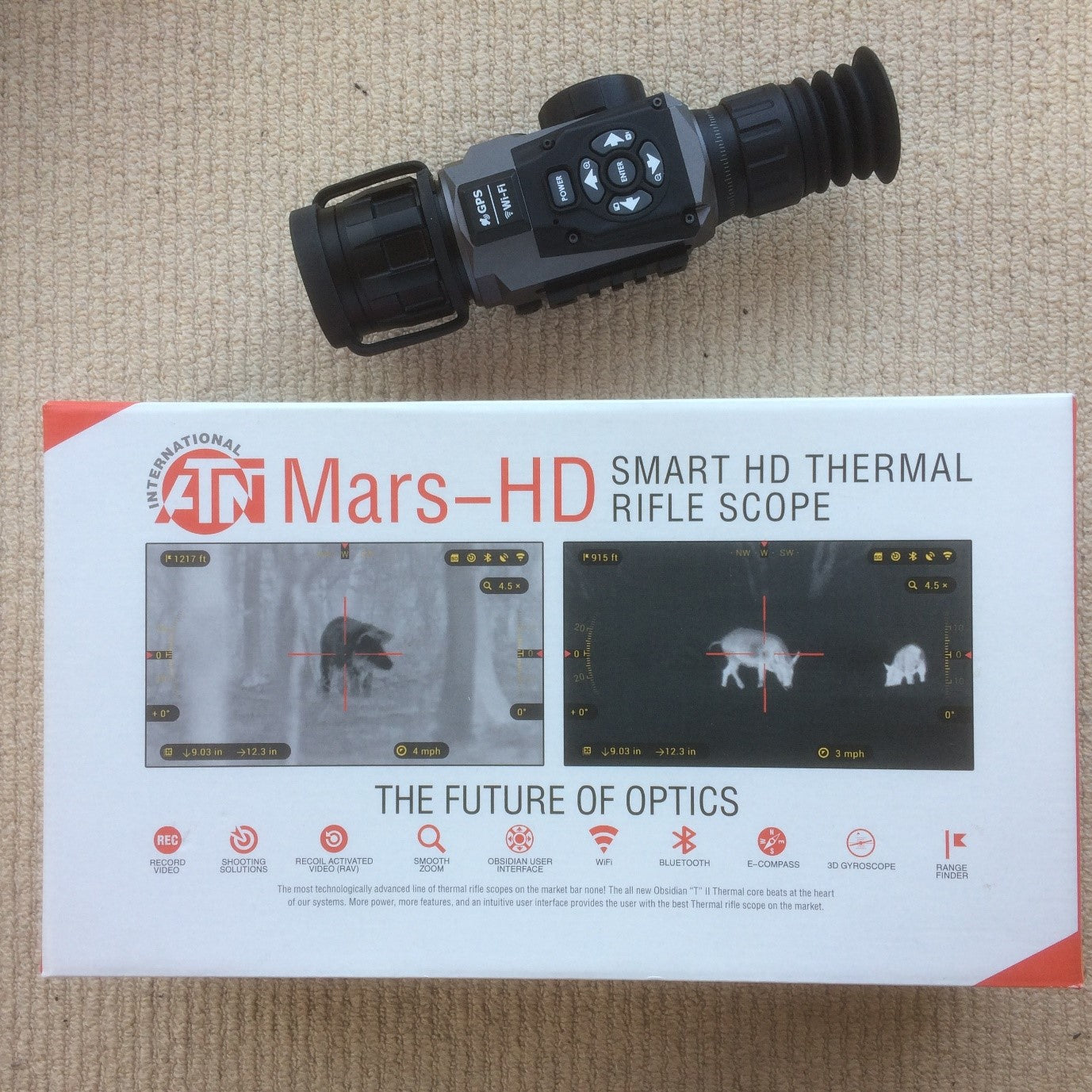
As well as offering thermal imaging this Mars-HD rifle scope by ATN has a host of features that aid your shooting, such as a range finder, and will even record video.
Today there are so many options when it comes to choosing night vision optics that the question is no longer whether or not we can shoot at night but which type of night vision is best for our desired application. Here are some questions to ask yourself as you choose the right system for you.
Do you need a rifle mounted system?
Are you going to use your night vision equipment for aiming and firing shots at night or do you just need a device for spotting and observing? If you need to fire aimed shots at night or in the dark, you need a rifle mounted sight. But if you don’t need to, perhaps a monocular or a set of night vision binoculars would be a more versatile option.
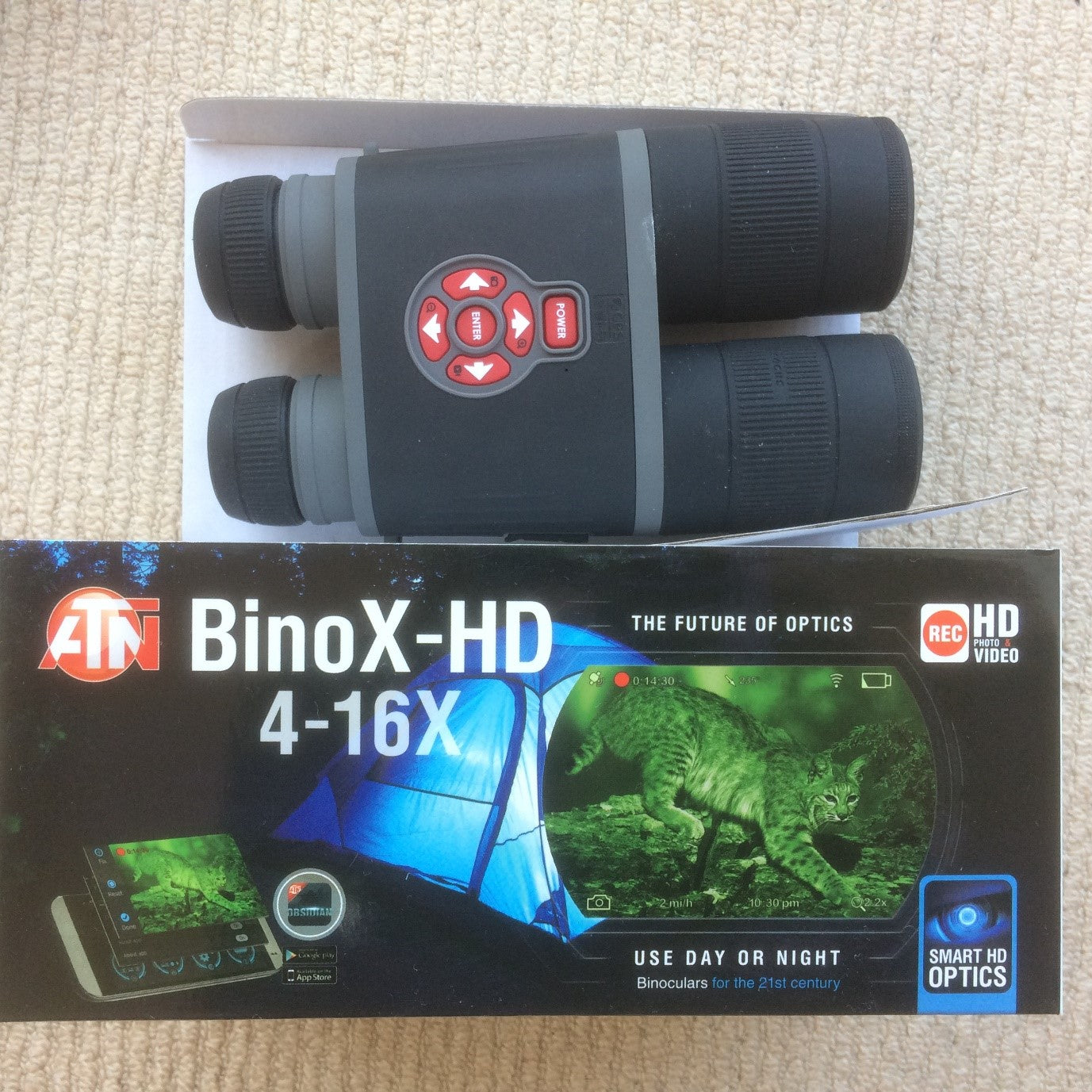
Something ATN Binoculars give you very functional night vision capability, including IR illumination and the ability to take pictures and send information to a phone or a tablet without having to have a dedicated night vision sight on your weapon.
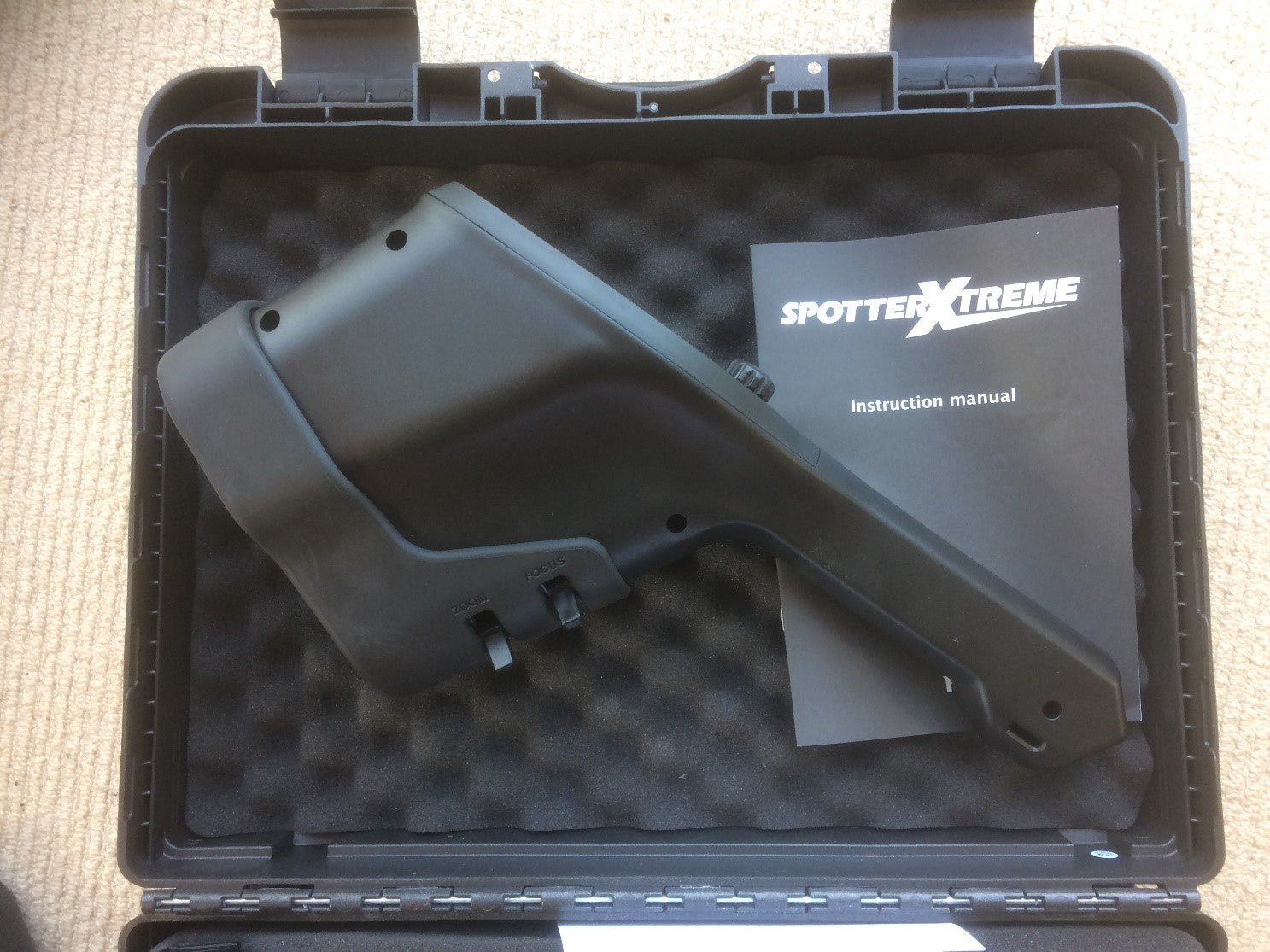
The Spotter Extreme is another ATN product which is not mounted to a rifle but is handheld. It is a dedicated thermal imager. Image Source: Wikipedia
Do you have a dedicated night shooting rifle?
Having to switch the optics back and forth from a day to night setup can be time-consuming and frustrating. Some scopes like the ATN X-sight II can function during day and night and be enhanced at night by the use of an IR illuminator. Other options, however, will be dedicated night vision equipment, and you will have to either dedicate the rifle you fit it to for use at night or change the scope to use during the day.
You can get around this by using a night vision optics kit that is attached to your standard scopes. Some of these are very well made, robust and suitable for use in the field. There are some on the civilian market though that are not suitable for use on centerfire rifles and trail cables, and are not robust enough to handle heavy recoil.
As well as these questions, you will have to consider your budget. Night vision equipment is never going to be cheap. It has certainly come down in price and is more readily available now than it ever has been, but it is still far from cheap. Remember that there is a lot more to night vision scopes than your average rifle scope, and you will have to get used to the settings and features of each one.

